Bongjeongsa Temple [UNESCO World Heritage] (봉정사 [유네스코 세계문화유산])
9.9 Km 29830 2023-05-18
222, Bongjeongsa-gil, Andong-si, Gyeongsangbuk-do
+82-54-853-4181
Bongjeongsa Temple is believed to have been built in 672 by the Great Buddist Monk Uisang. However, other documents seem to state that Neungin Daedeuk, a disciple of Monk Uisang, established the temple. During the Korean War, many documents related to the temple were destroyed, so much of the history has been lost. In 1972, while reconstruction work was being done on Geungnakjeon Hall, records were discovered stating the hall was repaired in 1363. This discovery gave concrete evidence that Geungnakjeon Hall is the oldest wooden building in the nation.
Dosanseowon Confucian Academy [UNESCO World Heritage] (도산서원 [유네스코 세계유산])
10.0 Km 43897 2024-05-30
154 Dosanseowon-gil, Andong-si, Gyeongsangbuk-do
+82-54-856-1073
In terms of architecture, Dosanseowon Confucian Academy complex can largely be divided into Dosanseodang compound and Dosanseowon compound. Dosanseodang area consists of living quarters and lecture halls where Toegye Yi Hwang, an eminent Confucian scholar, lived and taught his students. Dosanseowon was built after Toegye Yi Hwang passed away by his followers' to honor the legacy of his teachings as well as to pay respects to the deceased.
Built in 1561, Dosanseodang lecture hall is the oldest building in the whole complex. It was personally designed by Yi Hwang, penname Toegye, to further his studies while educating future scholars after moving to the countryside. Living quarters used as a student dormitory were also built along with the lecture hall.
Dosanseowon compound was completed in 1576, six years after Yi Hwang's death. Yi Hwang's ancestral tablet was enshrined inside Sangdeoksa Shrine in 1572. Two years later, Jeongyodang Lecture Hall was built to relocate the tablet and with the addition of buildings to the hall's east and west, the area became a seowon. In 1575, the establishment was bestowed a royal charter and a plaque with the name Dosanseowon written by Han Seok-bong, and became the Confucian academy headquarters in the Yeongnam region.
MONTRER CHEF (몽뜨레셰프)
10.0 Km 60 2021-03-30
346-124, Gwangwangdanji-ro, Andong-si, Gyeongsangbuk-do
+82-54-813-5454
It is a great place with an outdoor terrace for family gatherings. This family restaurant is located in Andong-si, Gyeongsangbuk-do. The most famous menu is pork shoulder steak.
Haemul Mongttang Kalguksu (해물몽땅칼국수)
10.0 Km 42 2021-03-24
287, Gwangwangdanji-ro, Andong-si, Gyeongsangbuk-do
+82-54-821-9290
It is a place where you can eat Kalguksu (chopped noodle soup) made with abundant seafood. This Korean dishes restaurant is located in Andong-si, Gyeongsangbuk-do. The most famous menu is noodle soup with clams.
Donkkaseu Wa (돈까스와)
10.0 Km 138 2021-06-25
287, Gwangwangdanji-ro, Andong-si, Gyeongsangbuk-do
+82-54-841-9290
This house offers homemade pork cutlet made from odor-free raw materials/refrigerated pork loin and formed into patties. This Korean dishes restaurant is located in Andong-si, Gyeongsangbuk-do. The most famous menu is pork cutlet.
Donga Sutbul Galbi (동아숯불갈비)
10.2 Km 21 2021-03-24
277, Jebiwon-ro, Andong-si, Gyeongsangbuk-do
+82-54-857-6942
This is a restaurant with delicious Samgyeopsal (pork belly) and Galbi (ribs). This restaurant's signature menu is grilled ribs. This Korean dishes restaurant is located in Andong-si, Gyeongsangbuk-do.
Zootopium (주토피움)
10.3 Km 0 2024-05-29
346-95 Gwangwangdanji-ro, Andong-si, Gyeongsangbuk-do
Zootopium is the largest animal & plant themed park in Gyeongsangbuk-do, home to over 200 species. The park provides the perfect environment for children to learn more about nature and living organisms. The park features both indoor and outdoor sections, as well as amenities such as a restaurant and play areas for children.
Picnic Gimbap Cheonguk (피크닉김밥천국)
10.4 Km 68 2021-03-30
249, Jebiwon-ro, Andong-si, Gyeongsangbuk-do
+82-54-858-2279
It is a place where you can eat a variety of Korean dishes. This Korean dishes restaurant is located in Andong-si, Gyeongsangbuk-do. The most famous menu is tuna gimbap.
Head House of the Tapdong Branch of the Goseong Yi Clan (법흥동 고성이씨탑동파종택)
10.4 Km 13416 2022-12-21
103, Imcheonggak-gil, Andong-si, Gyeongsangbuk-do
+82-54-840-5225
Head House of the Tapdong Branch of the Goseong Yi Clan, located in Andong, serves as a residential house of the Yi descendents even to this day. Constructed in 1685, this house has all of the beautiful features that represent Joseon-style architecture. After this period, additional structures were added periodically. Across from the house is the Seven-story Brick Pagoda at Beopheungsa Temple Site.
Sinsedong Chilcheung Jeontap - Sinsedong 7 stories Brick Pagoda (안동 법흥사지 칠층전탑)
10.5 Km 17527 2021-07-13
Beopheung-dong, Andong-si, Gyeonsangbuk-do
+82-54-840-5225
Designated National Treasure No.16, Sinsedong Chilcheung Jeontap is Korea's oldest and largest stone pagoda.
The pagoda measures 16.8 meters high with a x_width of 7.75 meters. The pagoda was originally built at Beopeungsa Temple during the eighth century of the Unified Silla Kingdom [654-935] and is the only remaining relic from the temple.
The pagoda is presently located on the estate of the head house of the Goseong Lee family. The sangryunbu, the ornamental top portion of the pagoda, has been totally lost, but the lower tiered portions are intact with beautiful carvings of Buddhist tutelary deity. Traces of tiled roof were found on each story of the tower. Historical records show that the tower was rebuilt in 1487 and that around the same period, three parts of the temple remained.
![Bongjeongsa Temple [UNESCO World Heritage] (봉정사 [유네스코 세계문화유산])](http://tong.visitkorea.or.kr/cms/resource/16/2654216_image2_1.jpg)

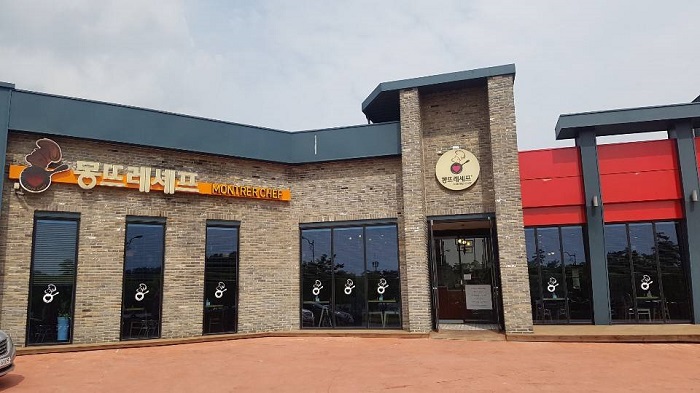
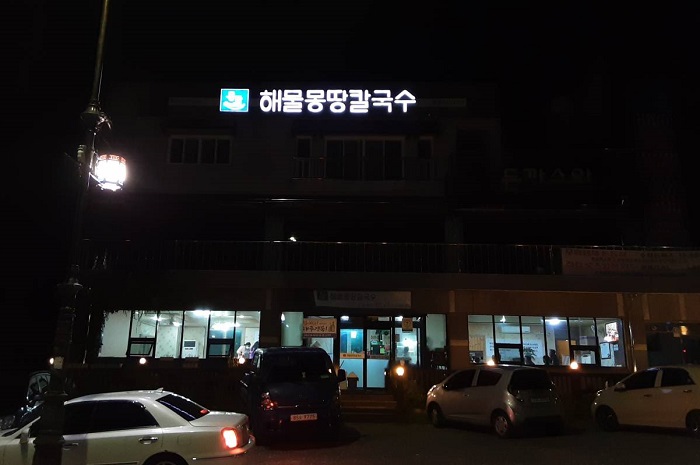
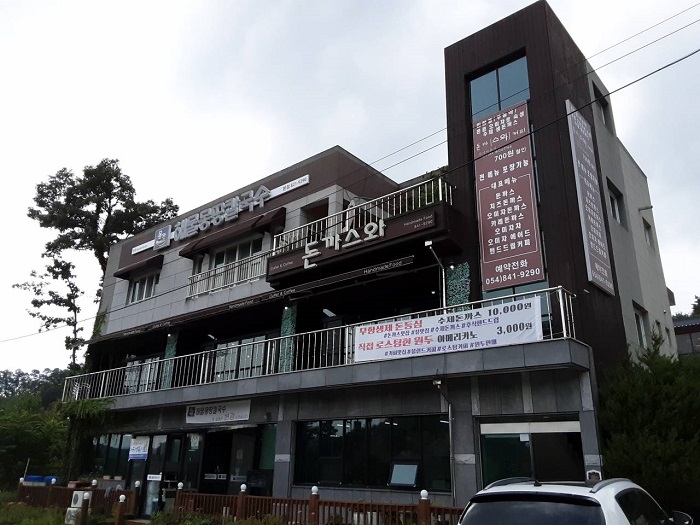
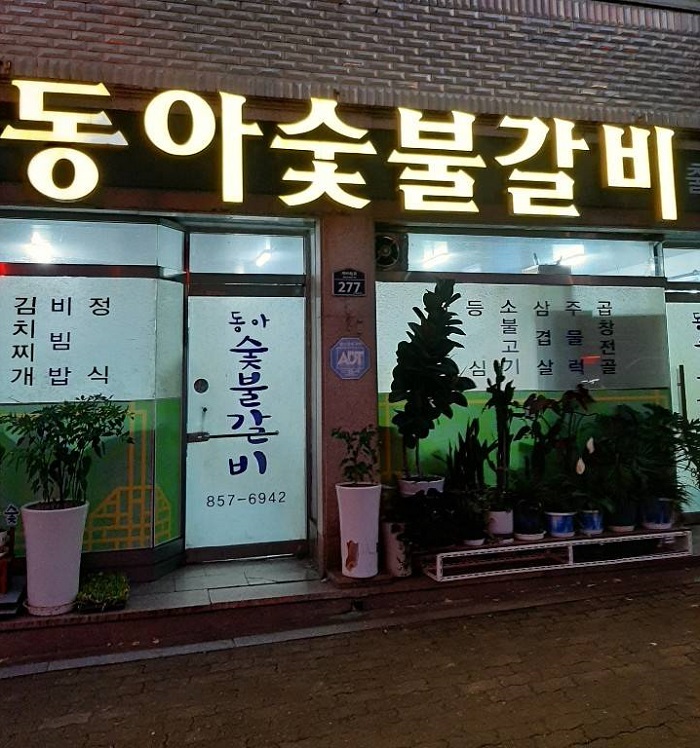
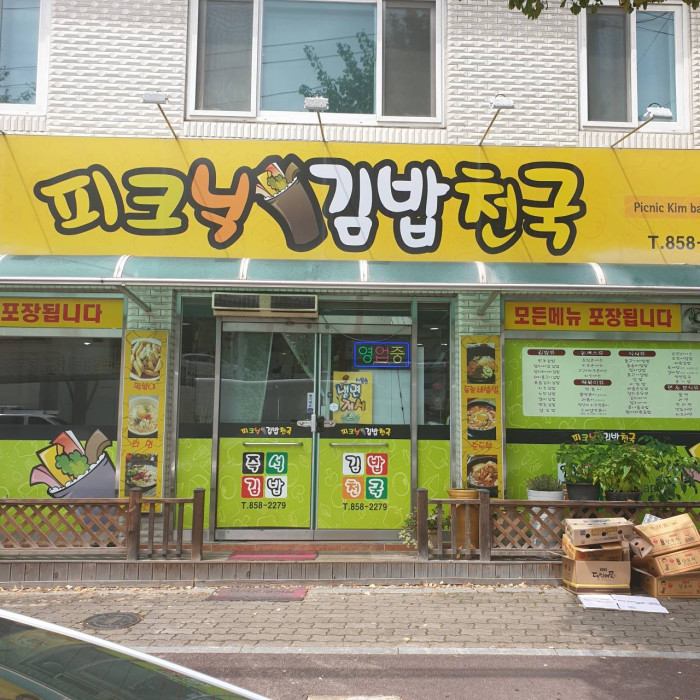
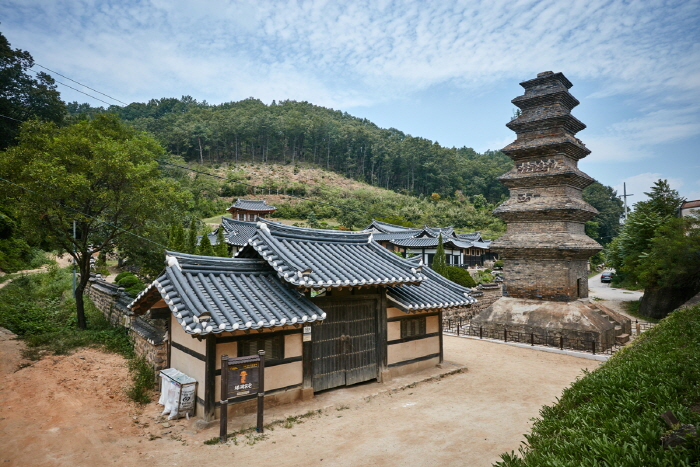
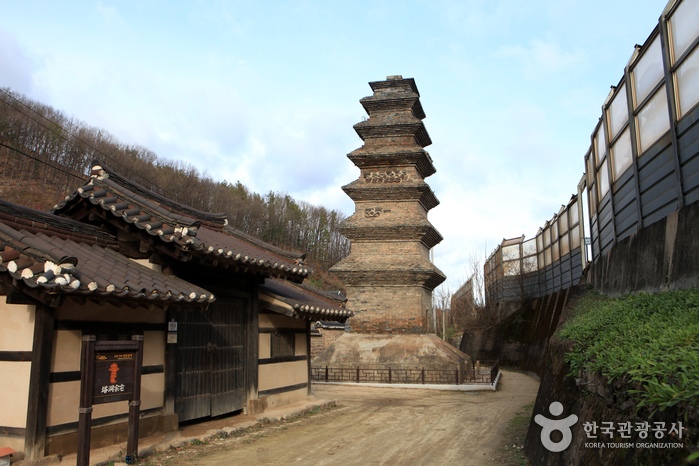
 English
English
 한국어
한국어 日本語
日本語 中文(简体)
中文(简体) Deutsch
Deutsch Français
Français Español
Español Русский
Русский